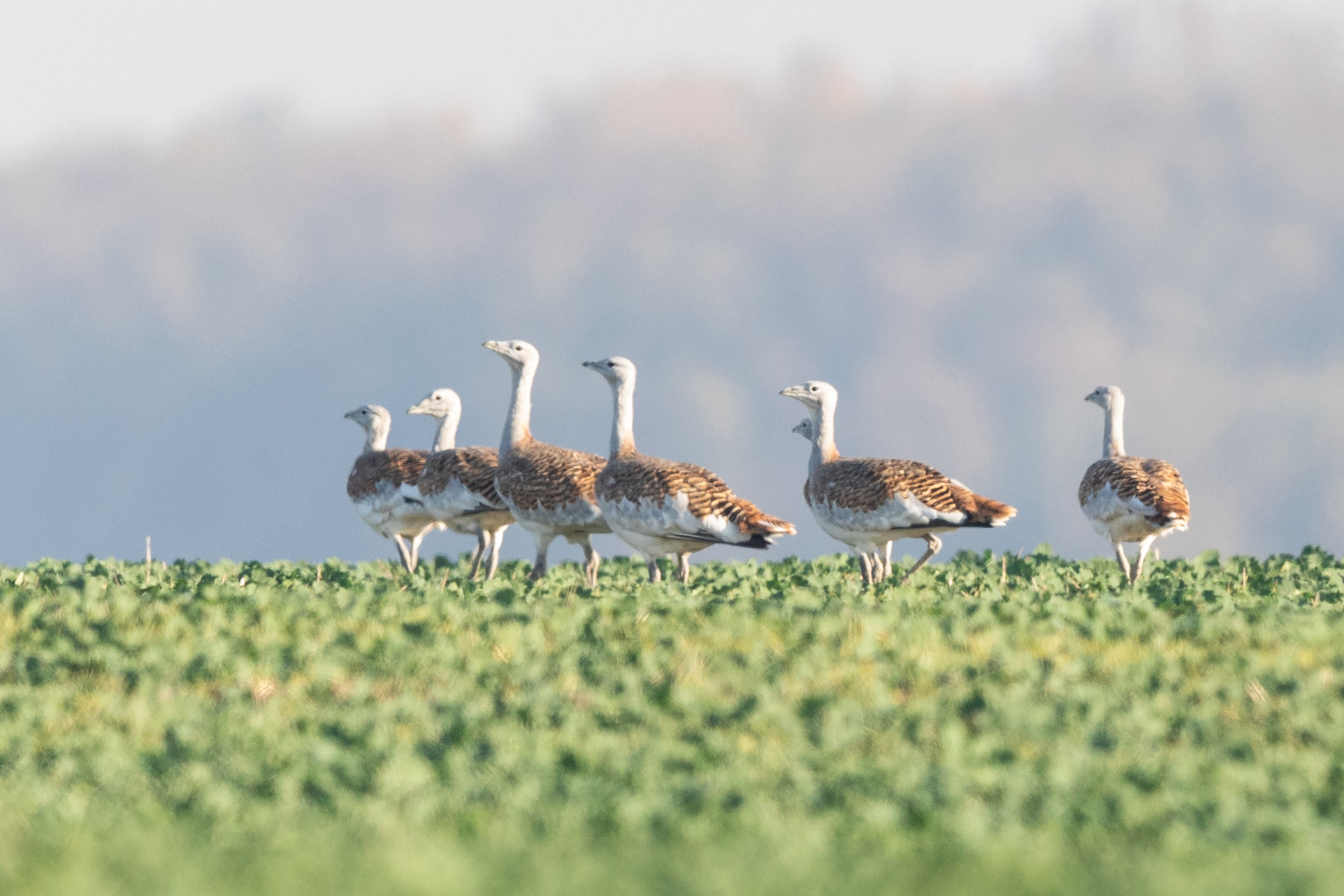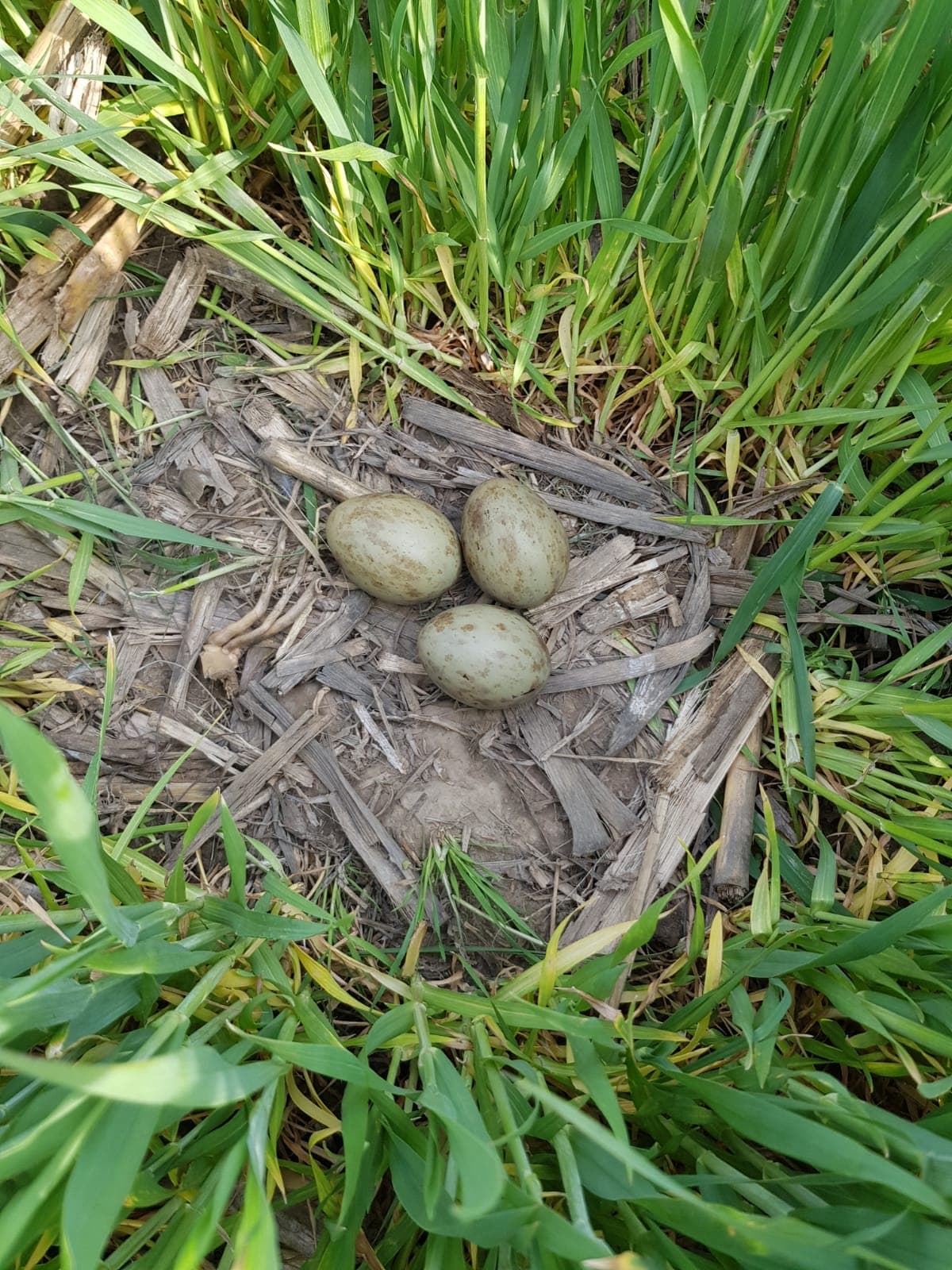“We have the pleasure to announce extraordinary news; finally, we have proof of a Great Bustard (Otis tarda) nesting in Romania. We rarely have the opportunity to announce such great news in the arena of nature conservation,” the Milvus Group, Bird and Nature Protection Association announced in a press release.
After many decades of uncertainty, there is proof that the Great Bustard is indeed breeding in Romania. It took the association 13 years of fieldwork and, perhaps, a stroke of luck to get this confirmation.
The Great Bustard (Otis tarda) is the heaviest flying bird in Europe. Classified by the IUCN as vulnerable, the species had disappeared from most parts of Europe by the 1950s, as its once extensive habitats (the Eurasian steppe) had become fragmented. This happened in Romania also, where after the nationalization of the communist era, the grasslands (its natural habitats) were tilled and converted into farmland. Mechanized agriculture, hunting and poaching also contributed to their decline.

In the 19th century there were stable populations in Banat, Crișana, the Transylvanian Plateau, the Wallachian Plain, Dobruja and a few other places in Moldavia. However, according to the official records from 1988, there were only 48 bustards left in Romania. After 1990, the Great Bustard was considered extinct in Romania.
Now, it appears that the bird maintained a last stronghold in Romania, in Salonta (Bihor County). According to the field observations of the Milvus Group from the last 13 years, there is a small cross-border population of around 40 individuals, whose habitat extends across the border from Romania to the Hungarian area of Salonta-Mezőgyán as well. Additionally, in accordance with the normal behavior of the species, they tend to use their traditional display (the courtship ritual of the males) and nesting sites.
(Here’s a video showing a male during courtship season filmed in Salonta, Romania)

A nest was found accidentally by Ioan Matiu Jr., a student of veterinary medicine, who was doing agricultural work. For the Milvus Group, the above photo has historical value. It proves the breeding of a species once considered extinct in Romania and also emphasizes how important fieldwork as well as the involvement of the local community and authorities are in nature conservation. Additionally, it points to the need for more efficient agri-enviromental programs for bustard-friendly farmers.
Presently, the Milvus Group has an ongoing project financed by the EU through the Interreg V-A Romania-Hungary Program. This has been in collaboration with Salonta City Hall and two other partners from Hungary – the Town Hall of Békés and the Körösök Völgye Natúrpark Association. As to the Romanian side of the program, it has been entirely shaped by the Great Bustard.
Milvus Group invites everyone interested to read more about the project at www.dropia.eu or on the group’s Facebook and Instagram pages.
Featured photo: Milvus Group